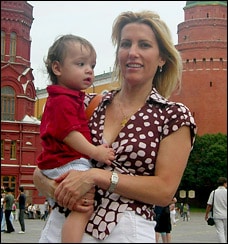Debate On Co-Parenting Inspires Thoughtful Meditation On Gender
 The New York Times has dedicated their “Room For Debate” in the opinion pages to how to get more men to carry domestic responsibilities. The six debaters each have different points when discussing the issue, but all of them chose to zero in on how we think about gender when it comes to childrearing.
The New York Times has dedicated their “Room For Debate” in the opinion pages to how to get more men to carry domestic responsibilities. The six debaters each have different points when discussing the issue, but all of them chose to zero in on how we think about gender when it comes to childrearing.
Andrea Doucet, a professor of sociology and women’s studies at Brock University, Ontario, Canada, argues that in order for women to succeed in the workplace after giving birth, men need to take a “daddy leave.” Both parents taking an equal parental leave allows both parents to prioritize family without women unfairly shouldering the entire burden. Although this effort is important for policy, Doucet points out that it’s also essential to changing how we think about parenting:
Parental leave is not gender ”equal” in any of these countries. But taking fathers into account is symbolically and practically important. It represents both an ideological and policy-based shift in the assumptions around gender and parenting.
Ute Frevert, the director of the Max Planck Institute for Human Development in Berlin and a professor of history at the Free University of Berlin, notes that gender inequalities are deeply rooted as we’re conditioned from a very young age to assess who can perform certain tasks by gender:
People hold on to belief systems, rituals and modes of behavior far longer than real-life circumstances urge and demand them to. This has to do with how these belief systems are passed on from one generation to the next, through mimetic procedures, learning devices and artifacts whose meaning and interpretation are hard to control. Children’s literature, for example, still works with images of family and gender roles that attract feminist criticism. The further you look back in time and include books that you grew up with and want to share with your children, the more difficult it is to reconcile their implicit and explicit messages with our ideas of gender equality.
Jeremy Adam Smith, the author of The Daddy Shift, co-editor of the forthcoming anthology Rad Dad: Dispatches from the Frontiers of Fatherhood and a founder of the blog Daddy Dialectic, observes that even though more fathers than ever are actively participating in the home, rigid language and gender-based ideas about breadwinning keep their efforts in the margins:
In the ideal resilient family, both women and men are capable of working for pay and working at home. But families often fall short of this ideal, partially because of lingering structural and interpersonal sexism, and partially because men lack support for their new caregiving roles at both home and work. Studies consistently show that 80 percent to 90 percent of mothers still expect fathers to serve as primary breadwinners (and very few will consider supporting a stay-at-home dad)…Men whose mindsets are still shaped by the sole-breadwinner ideal need explicit permission and encouragement from both their female partners and their bosses to take advantage of leave policies and participate in family life.
We also need to shift the language we use to discuss work-family issues in a more inclusive direction, so that it includes fathers as well as mothers. That language should stress resilience and meaning to men instead of the language of equality that has mobilized women.
Despite tackling the issue from the different platforms of work life balance, parental leave, and straight up gender inequality, the common thread of gender roles proves to be at the core when debating how to get more men in the home. The Times’ discussion reveals to us how gender-based a lot of our assumptions about parenting truly are, despite women’s advances in the workplace and education. When it comes to determining who is capable of changing diapers, cooking meals, and prepping the baby formula, much of what we assume is simply that — assumed.




